If your electric bicycle exceeds the legal power or speed limits set for e-bikes, or if it has certain features like high-speed throttles, there is a good chance it may cross into motorcycle territory, which comes with stricter rules.
Understanding when an ebike becomes a motorcycle is crucial: it affects whether you need a driver’s license, insurance, registration, or even protective gear, and it can determine where and how you are allowed to ride.
We are breaking down the rules by region, explaining the key factors, and giving you practical tips for choosing the right e-bike.

When Does an Ebike Become a Motorcycle? Key Factors
1. When it Exceeds the Legal Ebike Motor Power and Speed Limits
You can consider your ebike to be a motorcycle when it exceeds 750W, 500W, or 250W in the United States, Canada, and the European Union, respectively.
Once your ebike exceeds these limitations, it generally needs to be registered, which usually triggers licensing and insurance, just like a traditional motorbike.
The primary condition for an ebike becoming a motorcycle is when it exceeds the maximum motor output of an ebike. The maximum motor output is one of the biggest legal differentiators, and it varies from country to country, even region to region.
- United States : 750 watts (1 HP)
- Canada: 500 watts
- European Union: 250 watts
2. It Exceeds the Maximum Assisted Speed For Ebikes in Its Category
When your ebike is capable of exceeding the maximum speed for the Ebike Class it is classified into, it becomes legally classified as a motorcycle.
Most states in the U.S adopt the definition of e-bikes laid down by the HB 727 law , which was enacted by Congress in 2002. This law classifies e-bikes into classes (Class 1, Class 2, and Class 3) based on top speed and level of motor assistance.
- Class 1 (U.S.): Pedal-assist only, up to 20 mph
- Class 2 (U.S.): Throttle-assisted, up to 20 mph
- Class 3 (U.S.): Pedal-assist only, up to 28 mph
- EU: Max 25 km/h (~15.5 mph)
Important note: The speed is measured with motor assistance only, without pedaling. If the motor alone can exceed the legal limit, the bike is often treated as a motorcycle.
3. When Throttle Power Exceeds Speed Limit
In many countries, there is a very strict distinction between pedal-assist e-bikes and throttle-powered e-bikes:
- Pedal-assist bikes provide motor help only when you pedal.
- Throttle-powered bikes can move the bike without pedaling.
In some regions, especially in Europe, the legal maximum speed for pedal-assist bikes is set to be higher than the maximum speed for a throttle-assist bike. Any throttle-powered bike that exceeds speed limits is immediately classified as a moped or motorcycle.
4. When Regional Laws Require It to Be Classified as a Motorcycle
Sometimes, there can be discrepancies between Federal Law and Regional law, which would require you to classify your ebike as a motorcycle in some states.
Federal law defines an e-bike as a bicycle with:
- Motor power equal to or less than 750W
- Top assisted speed equal to or less than 20 mph
However, some states impose stricter laws, while others have more relaxed laws:
- According to California e-bike laws, Class 3 e-bikes can go 28 mph (you may need to wear a helmet and stay off certain bike paths). However, your ebike will not be classified as a motorcycle even if it is so in other states.
- Connecticut ebike laws require ebikes with motors above 750W or speeds above 28 mph to be classified as motor-driven cycles, requiring registration and insurance.
- In New York City, High-powered e-bikes face stricter enforcement, especially for reckless riding or use on sidewalks.

Ebike vs. Motorcycle: Quick Differences
| Region | E-Bike Limits | Motor Vehicle Threshold | Licensing/Registration |
| U.S. | Motor: 750W, pedal-assisted | 750W+ or 20+ mph (Class 3) | Varies by state |
| Canada | Motor 500W, max speed 32 km/h (20 mph) | 500W+ or 32 km/h+ | Varies by province |
| EU | Motor 250W, max speed 25 km/h (15.5 mph) | 250W+ or 25 km/h+ | Varies by country |
Key Takeaways
-
Power and speed are the defining factors.
Exceeding your region’s limits usually turns your e-bike into a motor-driven cycle. -
Pedal-assist vs. throttle matters.
Pedal-assist bikes are generally treated more leniently than throttle-powered bikes. -
Local regulations vary.
Always check your city, state, or country’s laws before buying or modifying your e-bike.
Safety and compliance go hand in hand. Knowing your e-bike’s classification can help you avoid fines, accidents, and legal headaches.

What Makes an E-Bike Legally Different From a Motorcycle?
The yardstick for determining when an ebike becomes a motorcycle is simple: when the ebike speed exceeds the legal speed limits set for electric bicycles. These legal limits could be motor power output caps or top speed caps.
So, to establish when an ebike becomes a motorcycle, you must first understand what an Ebike is according to the law.
What is an Ebike?
At its core, an e-bike is just a bicycle with the following features:
- A motor that assists pedaling
- Pedals, so you can propel the bike yourself
- Speed and power limits that keep it classified as a bicycle rather than a motor vehicle.
The main distinction between an ebike and a motorcycle is whether or not it falls within the speed and power limits established by the law. When your ebike exceeds the set speed limit for ebikes, it should be classified as a motorcycle.

Practical Tips for E-Bike Buyers
1. Know your commute and topography.
Understand what type of e-bike you need based on the topography of the area you intend to commute in.
- If you are in a city or urban area with lots of stop-and-go traffic, a Class 1 or Class 2 e-bike will suffice.
- But if you live in a hilly area or take very long rides, a Class 3 pedal-assist bike is a good choice.
For a hilly area, consider the Panther Electric Mountain Bike , an affordable e-mtb for urban areas. With a top speed of mph, it is the perfect ebike to stay within legal limits while perfectly within the law.
3. Check local laws before buying.
- If you buy a high-powered e-bike, make sure it’s street-legal where you live.
- Also, pay attention to battery range, not just speed. A motor can be legal, but if the battery doesn’t last the whole commute, it won’t be useful.
Find and explore more details on California E-bike laws and New York E-bike Laws.
4. Throttle vs. pedal-assist preference.
In some countries, there is a difference in the way the law treats pedal-assisted bikes and throttle-assisted bikes.
- Pedal-assist bikes encourage exercise and are generally legal almost everywhere.
- Throttle bikes give more convenience but may face stricter rules.
The BZ1 Step-Thru Electric Bike is designed for every journey, every mood, and every rider. With 5 levels of pedal assist and a throttle range of 25 miles, it is perfect for commuting to work, running errands, or simply enjoying a leisurely ride.
5. Safety gear matters.
Even if a helmet isn’t legally required, it’s highly recommended, especially for faster Class 3 bikes.
6. Future-proof your purchase.
Keep in mind that some e-bike laws may change over time
Buying a model that’s slightly under the power or speed limits can help ensure you stay compliant for years.

Bottom Line
E-bikes offer convenience and freedom, but knowing where the legal lines are is essential. Power, speed, and pedal-assist features determine whether your ride is a bicycle or a motorcycle in the eyes of the law. Ride smart, stay legal, and enjoy your e-bike safely!

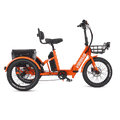

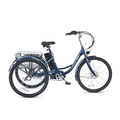
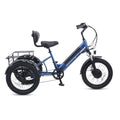
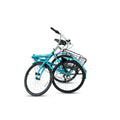
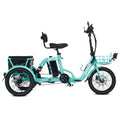

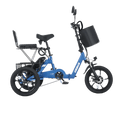




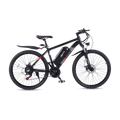


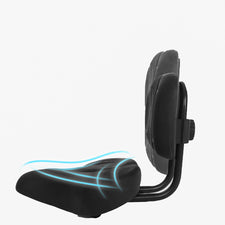





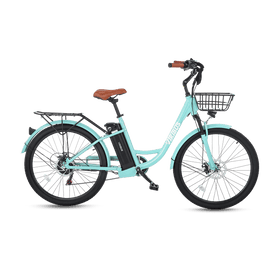
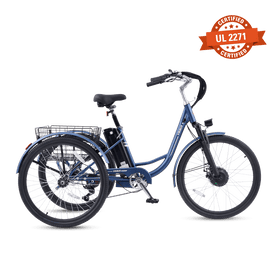
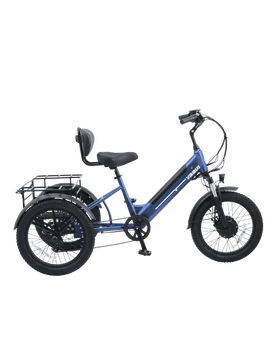




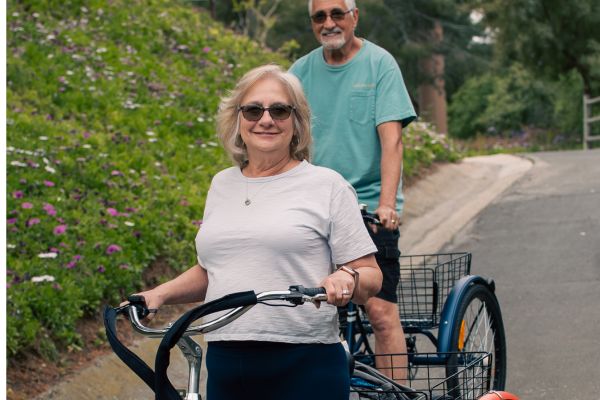
Leave a comment
All comments are moderated before being published.
This site is protected by hCaptcha and the hCaptcha Privacy Policy and Terms of Service apply.